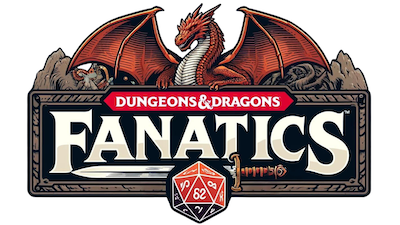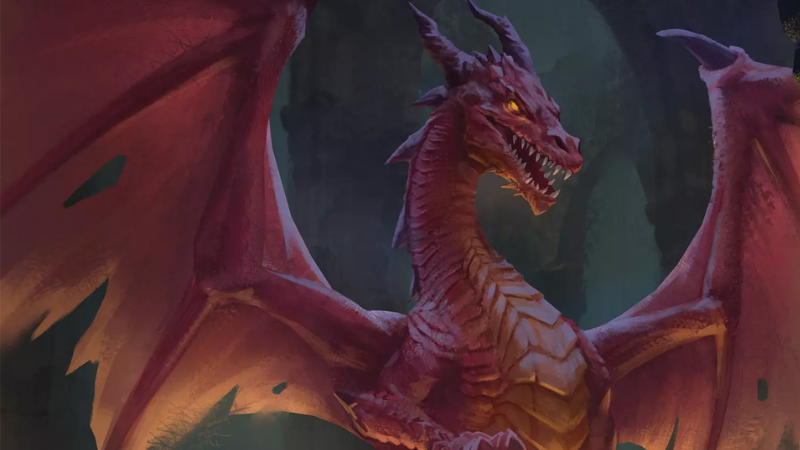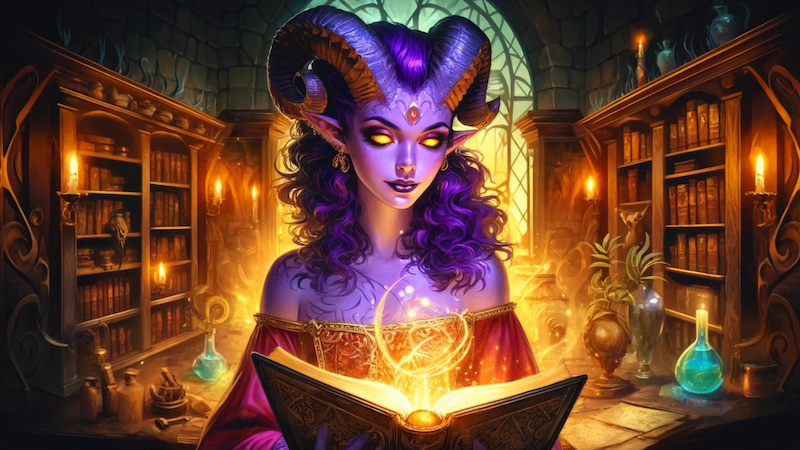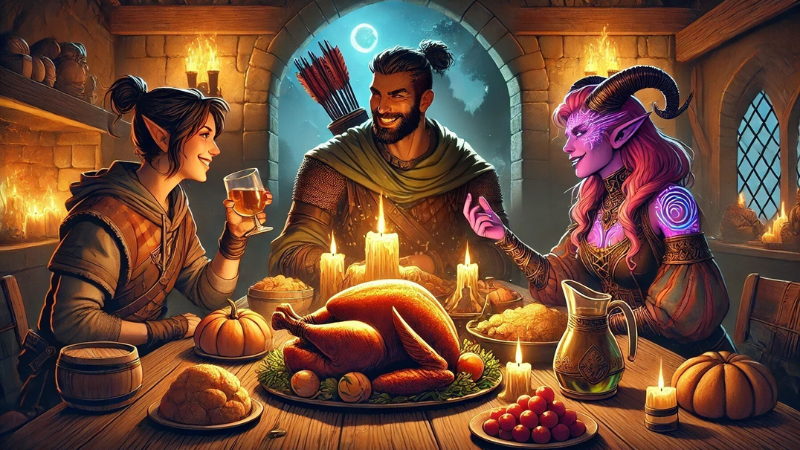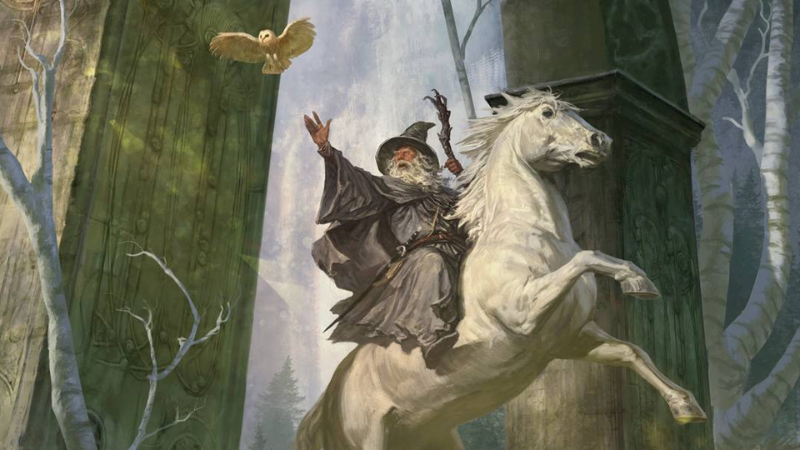

Kara-Tur: A Guide to DnD’s Eastern Realms
As an Amazon Associate I earn from qualifying purchases.
Over the years, Dungeons & Dragons has spawned countless unique campaign settings. From iconic worlds like the Forgotten Realms and Dragonlance, to more recent creations like Planescape and Eberron.
Yet one of the most beloved – and at times controversial – settings has been the lands of Kara-Tur. First appearing in the mid-1980s for Advanced Dungeons & Dragons rules, the setting has since appeared in other editions of the game, spawning a slew of adventure modules, books and related content. For longtime fans, Kara-Tur is a beloved, yet often overlooked and misunderstood, setting that offers a unique alternative to more Eurocentric DnD worlds. For others, it’s a problematic setting that leans into Asian stereotypes and features a lack of nuanced cultural representation.
So just what is Kara-Tur and why does it still matter to DnD? Below we dig into the past, present and potential future of this storied Eastern realm.


Table of Contents
- What is Kara-Tur in DnD?
- What are the lands of Kara-Tur?
- Where is the best map of Kara-Tur?
- What are Kara-Tur’s culture, species & languages?
- Who are the gods and religions of Kara-Tur?
- How does magic work in Kara-Tur?
- What DnD books feature Kara-Tur?
- What makes Kara-Tur so controversial?
- Is Kara-Tur in DnD fifth edition?
- The future of Kara-Tur in DnD


What is Kara-Tur in Dungeons & Dragons?
Kara-Tur is a Dungeons & Dragons campaign setting that was first appeared in the 1985 AD&D sourcebook Oriental Adventures, which was written primarily by longtime TSR employee David “Zeb” Cook, with additional materials from DnD co-creator Gary Gygax and French game designer Francois Marcela-Froideval. The idea was to move away from typical European fantasy settings that DnD had become synonymous with and to bring elements of East Asian culture and mythology into the game via new classes, races, monsters, magic items and rules.
As the chief location for the Oriental Adventures supplement, Kara-Tur was originally envisioned as its own unique world with the multiverse. The setting, however, was later ported over to the Forgotten Realms in AD&D 2nd edition. In fact, the first official mention of the Forgotten Realms in a DnD sourcebook is in the 1987 adventure OA3: Ochimo: The Spirit Warrior.
Over the years, Kara-Tur has continued to exist as a part of the Forgotten Realms. The setting, however, has been mentioned only in passing in various DnD sourcebooks, with the last official supplement for Kara-Tur released in 1990.


What are the the lands of Kara-Tur?
In DnD lore, Kara-Tur is a vast continent located to the east of Faerûn, the central setting of the Forgotten Realms. The continent is divided into ten distinct nations and regions, each with its own unique culture, history, and geography. These regions include:
- Shou Lung: Modeled after Imperial China, Shou Lung is characterized by its centralized government, vast bureaucracy, and majestic cities.
- T’u Lung: Representing historical China during periods of political disunity, such as the Warring States period, T’u Lung is marked by internal strife and competing warlords.
- Wa: Inspired by feudal Japan, Wa features samurai, shoguns, and a rigid social hierarchy.
- Kozakura: Another representation of Japan, focusing on the Sengoku period, known for its warring states and samurai conflicts.
- Northern Wastes: A harsh, cold region analogous to Eastern Siberia, inhabited by nomadic tribes.
- Tabot: Reflecting Tibet, Tabot is known for its mountainous terrain and monastic traditions.
- Koryo: Based on Korea, Koryo is a land of rich cultural heritage and historical significance.
- Island Kingdoms: Representing pre-colonial Indonesia and the Philippines, these islands are known for their diverse cultures and maritime prowess.
- Plain of Horses: Drawing from historical Mongolia, this region is home to nomadic horsemen and vast steppes.
- Jungle Lands of Malatra: Reflecting the pre-colonial civilizations of Indochina, including the Khmer Empire and Vietnam, this region is dense with jungles and ancient ruins.


Where can you find the best map of Kara-Tur?
While there have been numerous maps of Kara-Tur completed over the years, most of them have long since been out of print and are difficult to come by (although they are included in digital versions of products found on DMSGuild). The most recent – and perhaps the best- map of Kara-Tur is an unofficial one that was created by DnD cartographer and designer Johnovick, who creates maps based on historic DnD campaigns. Jonovick updated the map for the DnD 5e rules and offered it free via his Patreon. He has also shared his updated map of Kara-Tur on Reddit.
You can also find a detailed interactive map on AideDD.com, which uses the original maps from the 1988 box set Kara-Tur: The Eastern Realms as a basis for the various locations.


What are Kara-Tur’s cultures, species & languages
The cultures of Kara-Tur are based on a variety of real world Asian locations and draw upon their various histories and mythologies, although in many instances they have their own unique elements. Notably, humans are the dominant race in Kara-Tur, but the other traditional DnD species of elves, halflings and orcs also exist in some form or another. There are, however, some species which are native to Kara-Tur, including the dwarf-like korobokuru, the enigmatic Spirit Folk and the monkey-like Vanara.
The primary languages of Kara-Tur include Shou, Kozakuran, and T’u Lungese, among others, each with its own script and dialects. Unlike other parts of the Forgotten Realms the Common tongue is different and reflects just how far away Kara-Tur is from the rest of Faerûn.


What are the gods and religions of Kara-Tur?
The pantheon of Kara-Tur is as diverse as its cultures, featuring a multitude of gods and spirits. The Shou Lung religion, for example, revolves around the Celestial Emperor and the Nine Travelers, who collectively form the Celestial Bureaucracy.
The spirit world also plays a much larger part in the lore of Kara-Tur than it does in other parts of the Forgotten Realms, with many inhabitants calling upon powerful nature spirits and otherworldly beings for aid and magical abilities.
The Way is also a unique religious and philosophical practice native to Kara-Tur that emphasizes darkness and light in all things and can be used to channel magic. Notably, these religions are influence by their real-world counterparts, incorporating elements of Confucianism, Taoism, Shinto and Buddhism.


How does magic work in Kara-Tur?
Magic in Kara-Tur is equally varied, with unique systems and traditions such as the Wu Jen (wizard) and Sohei (warrior monk). The magical practices often draw from East Asian mythology, including elements like feng shui, spirit summoning and alchemical potions.
In all other respects, magic functions much the same as it does throughout the Forgotten Realms and traditional DnD campaign settings, with magical abilities granted by both gods (in the case of Clerics and Paladins) and through magical study, sorcerous blood or service to otherworld beings (in the case of Wizards, Sorcerers and Warlocks).


What D&D Books Feature Kara-Tur?
Kara-Tur has been featured in various D&D supplements, adventure modules, and novels over the years. The setting was first introduced in the Oriental Adventures supplement which provided a comprehensive overview of the new classes, races, and rules specific to the setting. The next foundational supplement Kara-Tur: The Eastern Realms, which was released in 1988 and offered detailed descriptions of the regions, maps, and additional lore.
The complete list of all DnD supplements focused on Kara-Tur is as follows:
- Oriental Adventures (1985)
- OA1: Swords of the Daimyo (1986)
- OA2: Night of the Seven Swords (1986)
- OA3: Ochimo: The Spirit Warrior (1987)
- OA4: Blood of the Yakuza (1987)
- OA5: Mad Monkey vs. the Dragon Claw (1988)
- Kara-Tur: The Eastern Realms (1988)
- Kara-Tur Trail Map (1989)
- FROA1: Ninja Wars (1990)
- OA6: Ronin Challenge (1990)
- OA7: Test of the Samurai (1990)
- Monstrous Compendium Kara-Tur (1990)
In addition to the adventure modules, Kara-Tur inspired several choose-your-own-adventure style books and novels. Notable examples include Blade of the Young Samurai (Endless Quest #23, 1984), Test of the Ninja (AD&D Adventure Gamebook #5, 1985) and Dragonwall by Troy Denning (1990), the latter of which is part of The Empires Trilogy focusing on an invasion of Faerûn by a Mongol-like horde of warriors from the Plain of Horses.


What is controversial about Kara-Tur?
The Kara-Tur campaign setting for Dungeons & Dragons has faced criticism for its portrayal of East Asian-inspired cultures, which many argue leans heavily on stereotypes and Orientalist tropes, reducing them to exoticized clichés that cater to Western perceptions rather than representing the cultures authentically. Elements such as ninjas, samurai, and mystical martial artists are presented in ways that feel derivative or caricatured, reinforcing simplistic and outdated ideas about Asian cultures. Additionally, the setting’s roots in the Oriental Adventures supplement amplify the controversy. The term “Oriental” itself is now widely recognized as outdated and problematic, as it generalizes and lumps together a diverse range of cultures.
Notably, Kara-Tur products featured on DMsGuild feature this following note from Wizards of the Coast:
We (Wizards) recognize that some of the legacy content available on this website does not reflect the values of the Dungeons & Dragons franchise today. Some older content may reflect ethnic, racial, and gender prejudice that were commonplace in American society at that time. These depictions were wrong then and are wrong today. This content is presented as it was originally created, because to do otherwise would be the same as claiming these prejudices never existed. Dungeons & Dragons teaches that diversity is a strength, and we strive to make our D&D products as welcoming and inclusive as possible. This part of our work will never end.


Is Kara-Tur in DnD 5e?
While Kara-Tur has not been fully reintroduced as a primary campaign setting in Dungeons & Dragons 5th Edition, it has been mentioned in several recent publications. Most notaly, the Sword Coast Adventurer’s Guide (2015) includes several brief references to Kara-Tur. It does not, however, detail what’s happened to the region in the wake of major events that have impacted the rest of the Forgotten Realms, particularly the Spellplague and the Second Sundering.
There is, however, no mention of Kara-Tur in any of the newer DnD 5e materials, including the 2024 Player’s Handbook and 2024 Dungeon Master’s Guide. That’s not to say Kara-Tur won’t appear in future fifth edition content, but for the moment the setting has been largely ignored.


The future of Kara-Tur
Despite its origins in a time when cultural representation in media was less nuanced and respectful, Kara-Tur has continued to captivate players with its rich history and remains a part of the Forgotten Realms – albeit one that’s mentioned rarely and only in passing. The problematic and culturally sensitive nature of Kara-Tur, however, means we may never see a return to the Eastern lands.
That being said, in May 2024 it was reported that Hasbro CEO Chris Cocks is an active participant in an ongoing Kara-Tur campaign, suggesting that there may be internal interest in revisiting and expanding the setting. In the meantime, players will have to settle on existing materials as a way to explore this hidden and often overlooked corner of the Forgotten Realms.
See Our Complete D&D Book Coverage
Visit our D&D Books page for more reviews of the latest novels and game books.


